STEM Pinwheel Play
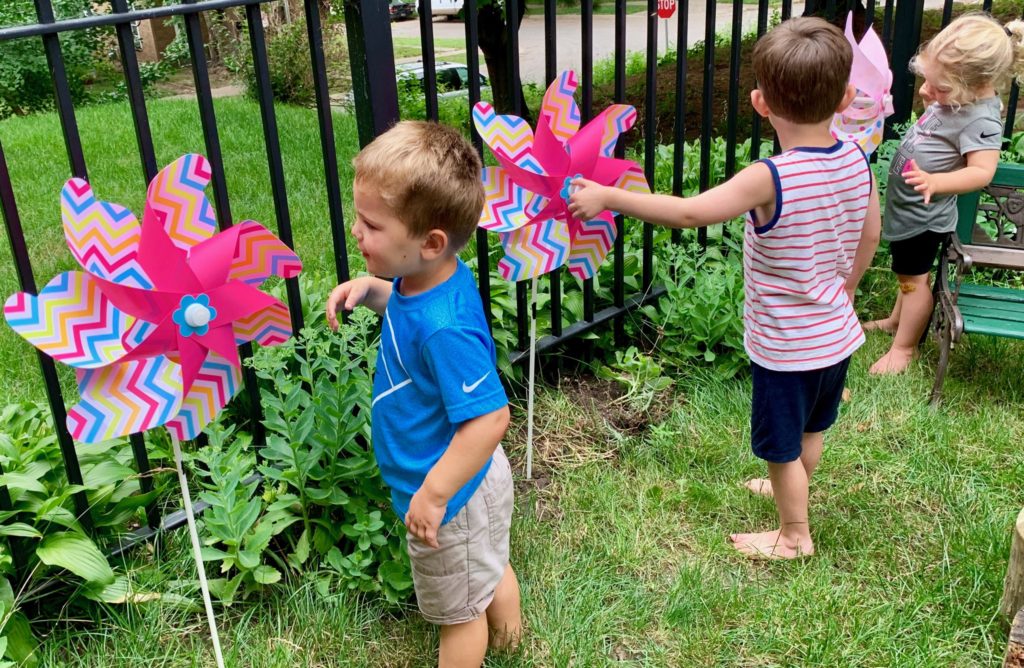
‘Why are they moving so fast?” This windy summer morning has Harper and his fellow STEM explorers racing toward the pinwheels in our outdoor play area.
“They are really, really fast today,” Jimmy agrees.
“They move faster on windy days!” adds five-year-old Noah. “You can stop them and then watch how fast they start up again.”
This moment of play has set our curriculum in motion as our gang begins to explore the pushing force of the wind. Outdoor activities have once again set the stage for learning as the children make the connection between the increasing force of the wind and the increasing speed of the moving pinwheel. The science behind this phenomenon is all about force and resistance.
Children are naturally curious—and curiosity drives exploration. As children interact with their environments, they are also engaging in hands-on learning. Through experimentation, discussion and persistence, our young learners are gaining a rudimentary understanding of science, technology, engineering and math. We’ve got all we need for STEM education right here in our own backyard!
“If I blow the pinwheel on this side, it won’t spin,” Jimmy points out. “I have to blow it on the other side into that little spot right there.”
“I am blowing on it and it isn’t moving at all!” says Eve. “Why won’t my pinwheel move?”
We look over and notice that Eve is blowing directly onto the front of her pinwheel.
“You can’t do it that way,” Noah explains. “Look! When I blow from the side, the air from my mouth pushes on the pinwheel to make it spin. Blow onto this side over here.”
As they cycle through the scientific process of hypothesizing and then testing out their ideas through collaboration and experimentation, the children are learning how wind speed and wind direction affect the motion of the pinwheel. They are also gaining insights into concepts such as cause and effect while building their STEM knowledge base and developing their critical-thinking skills.
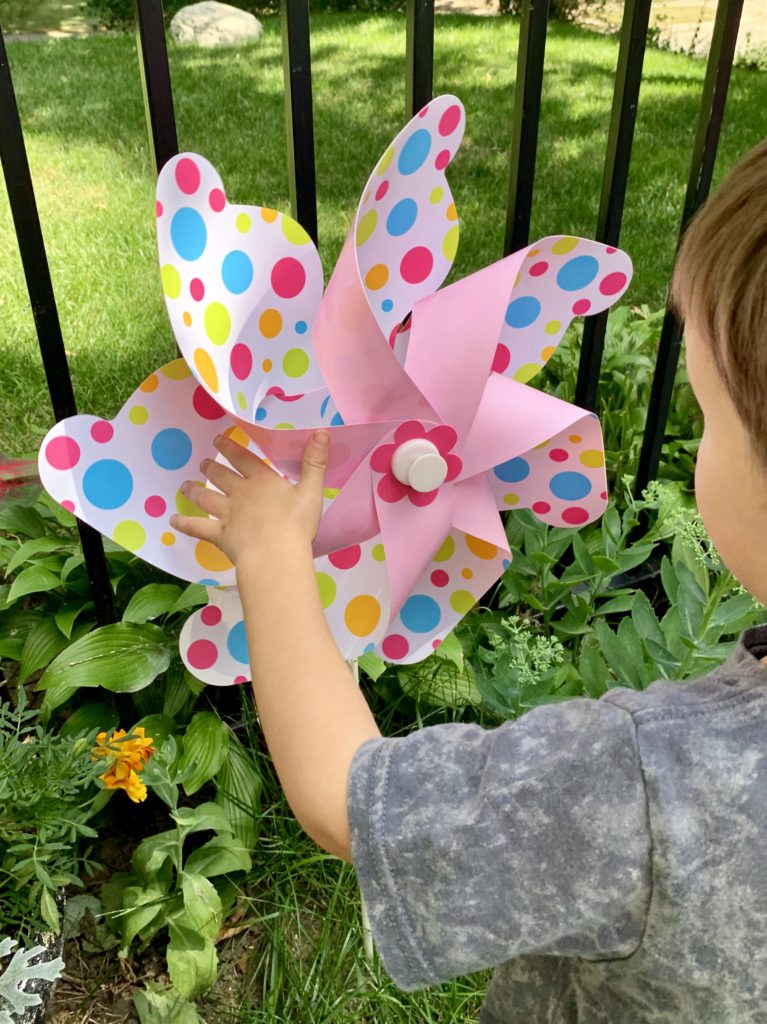
“I saw these big, big, big, BIG pinwheels when we drove to grandma’s house!” shares Sally, who just joined in on the pinwheel play. “They were all white, but they were giant! They weren’t as fast as these. Maybe big pinwheels go slower?”
“You mean the wind turbines?” asks Noah. “I’ve seen those too! They help give the farmers and the town electricity and power.”
“I can push the pinwheel with my hand and it goes this way,” says another child. “If I pull on this side, it goes in the same direction.”
The conversations are fast, informative and focused. The children’s developing brains seem to be moving as quickly as the pinwheels themselves. This is rich, authentic, hands-on learning. This is what developmentally appropriate learning looks like!

Students expand their understanding of cause and effect as they alternately push and pull to see how the pinwheels will spin.
By including vocabulary words such as “push, pull, move and change direction,” the children learn to use these words accurately in discussions—without isolated drills or memorization. These types of conversations help foster the development of expressive and receptive language skills.
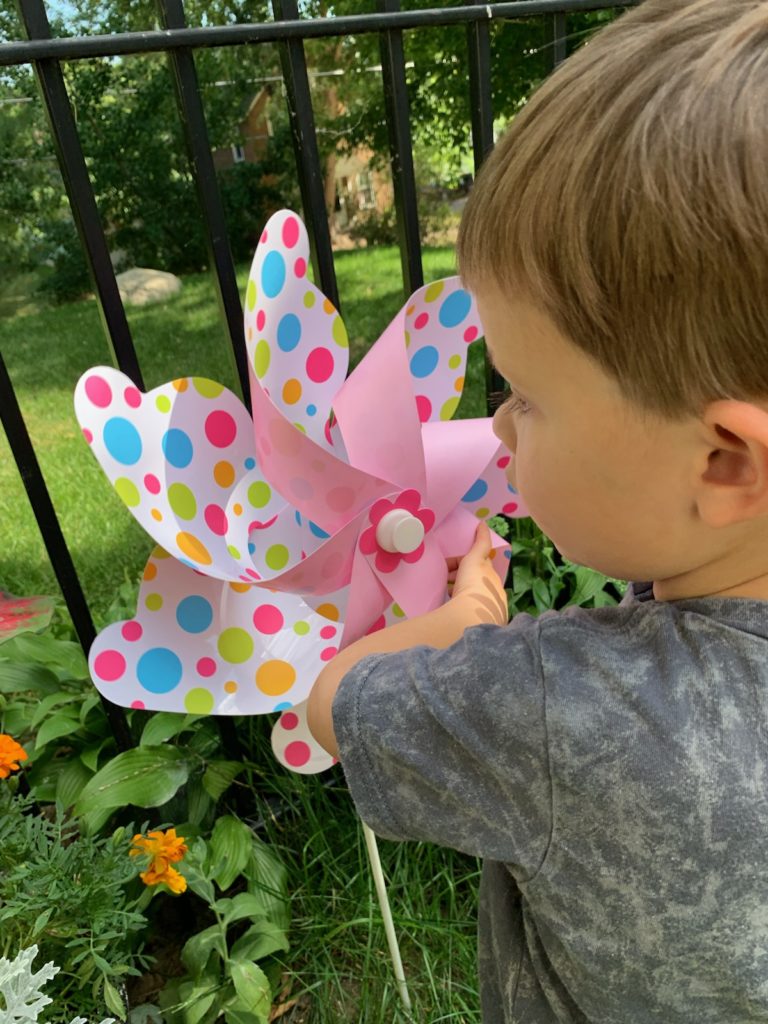
By engaging in the simple act of playing with pinwheels in the wind, the children are learning an important lesson about force and motion.
By sharing their ideas, considering the observations and solutions expressed by their peers and working together, the children are also engaging in collaborative scientific inquiry.
They are learning about science (air and wind, cause and effect, data collection and analysis).
They are gaining insights into technology as they use and modify a simple machine (e.g., the pinwheel).
They are laying the foundation for future forays into engineering as they refine and test out their ideas about how these simple machines work.
And they are meeting their early math standards as they discuss size, surface area, order, shapes and patterns.
By golly, we’ve got STEM!
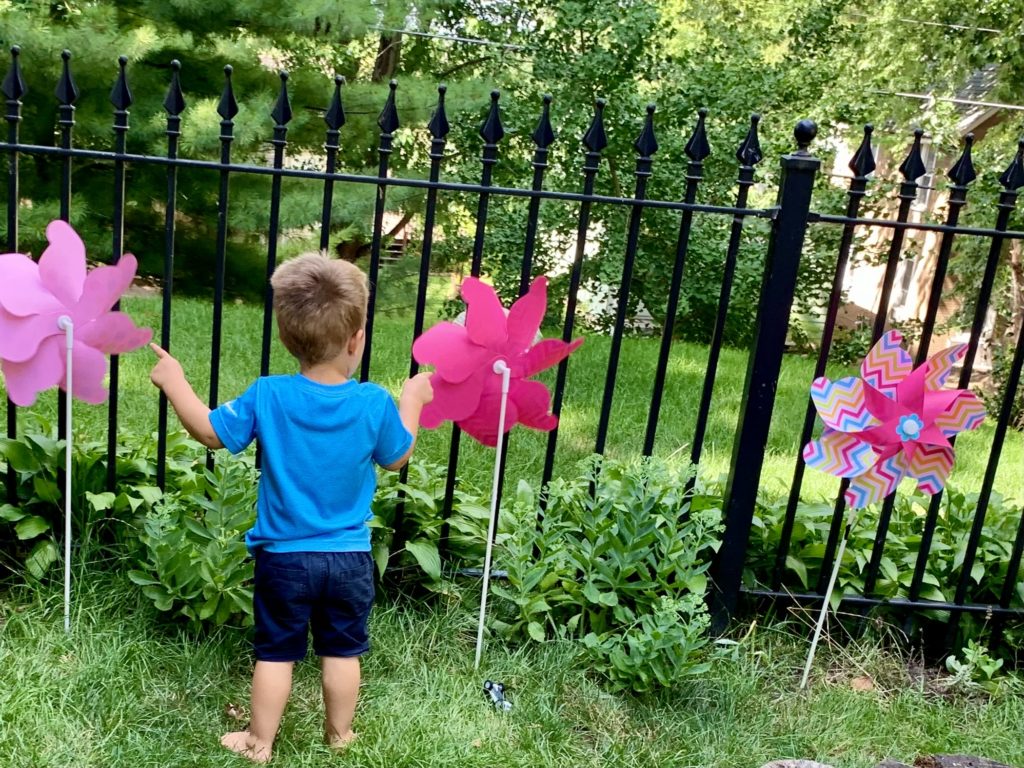 Outdoor environments provide us with wonderful, spontaneous opportunities that require little to no planning or setup. Unscripted moments allow children to create their own curriculum, choose their own projects and make their own discoveries.
Outdoor environments provide us with wonderful, spontaneous opportunities that require little to no planning or setup. Unscripted moments allow children to create their own curriculum, choose their own projects and make their own discoveries.
As they become deeply engaged with real-world materials and opportunities, children also pose and answer their own questions.
Children learn better when they are given the time and freedom to work through their ideas and arrive at their own conclusions.
I can’t imagine a better setting for STEM exploration than a sunny day with a nice breeze and a few pinwheels!
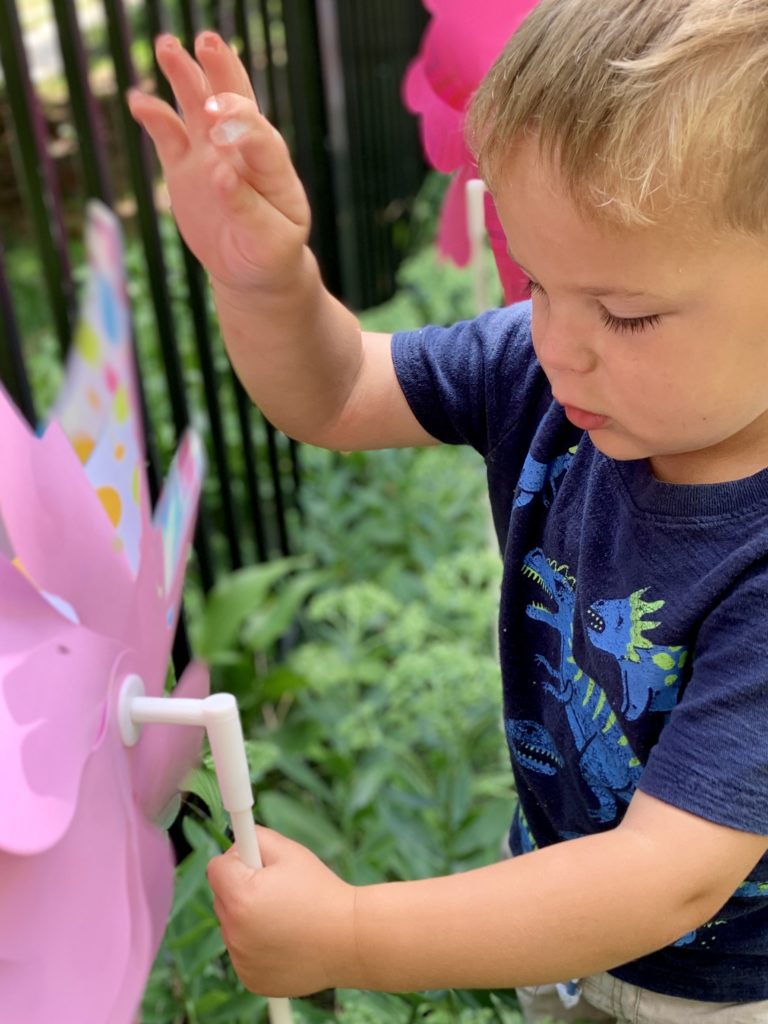
This is great how something so simple can be turned into a STEM learning experience. You just need to know what questions to ask and how to move the discussion along.